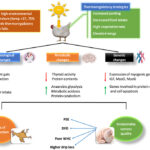The Art of Critiquing Research
Critiquing research is a fundamental skill in academic and professional circles, playing a pivotal role in the advancement of knowledge, improvement of scientific practices, and assurance of quality in published work. It involves a structured and analytical assessment of research studies, where the aim is not merely to find faults but to evaluate the validity, reliability, and overall contribution of a study to its field. The art of critiquing research lies in balancing objectivity with constructive insight, guided by a deep understanding of both methodological principles and the context of the study.
1. Understanding the Purpose of Critique
The primary goal of a research critique is to determine the strengths and weaknesses of a study. This includes evaluating the research question or hypothesis, design, methodology, data analysis, interpretation of results, and the implications of the findings. A well-conducted critique should also reflect on the ethical standards adhered to in the research and the study’s relevance to current knowledge and practice.
2. Core Elements of a Research Critique
A good critique typically covers several core areas:
- Title and Abstract: Is the title clear and reflective of the content? Does the abstract succinctly summarize the key aspects of the study?
- Introduction and Literature Review: Does the research problem arise logically from the existing body of knowledge? Is the rationale well-supported by current literature?
- Methodology: Are the study design, sampling methods, instruments, and procedures appropriate and clearly described? Are the methods valid and replicable?
- Data Analysis: Are the statistical or qualitative methods suitable for the data? Are the results presented clearly and without bias?
- Discussion and Conclusion: Does the interpretation of findings align with the results? Are limitations acknowledged? Are recommendations supported by the data?
- References: Are sources credible, current, and relevant?
3. Skills Required for Effective Critiquing
To critique effectively, one must develop critical thinking, attention to detail, and a solid grasp of research methods. Familiarity with subject-specific terminology and standards is essential. Importantly, critiquing also requires humility and fairness—recognizing the effort behind the research while being rigorous in evaluation.
4. Constructive Criticism vs. Fault-Finding
A critique should aim to enhance understanding and encourage improvement. Constructive criticism suggests ways to strengthen future studies or correct methodological flaws, whereas mere fault-finding can be dismissive and counterproductive. The tone of a critique should be respectful and scholarly, not personal or derogatory.
5. The Role of Peer Review and Academic Growth
In academic publishing, critiquing is formalized in the peer review process. Peer reviewers provide feedback that influences whether a manuscript is published, revised, or rejected. For students and early-career researchers, critiquing published work is also a learning tool—it sharpens analytical skills and deepens understanding of good research practices.
6. Conclusion
Critiquing research is both a science and an art. It requires knowledge, objectivity, and empathy. When done properly, it not only improves the quality of individual studies but also strengthens the collective integrity and progress of research disciplines. Ultimately, the art of critique is integral to the scientific endeavor—it challenges assumptions, refines methodologies, and pushes the boundaries of what we know.




Good deta
It’s very helpful and well explained
24-CUVAS-0026
Well explained and concise.
24-CUVAS-0022
Excellent Knowledge
Well explained
24-CUVAS-0020
24-CUVAS-0026
Nice